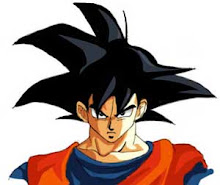Credit to most of this goes to Nichole Hamilton with some additional thoughts from myself
"Carly Says Jacket Off"
Cartilage: Labral tear / articular cartilage wear
Soft tissue: Anterior capsule sprain, Iliopsoas tendinopathy, Iliopsoas bursa
Joint: OA / Synovitis
Other Dx: Stress # (NOF, Pubic Ramus), Osteitis Pubis, Hernia, Abdominal Pathology
"WHY is the anterior hip painful?"
Excessive load on the anterior hip can occur due to:
1) Structural (bony)
FAI: CAM, PINCER or combined
2) Biomechanical dysfunction
Increased biomechanical load on the anterior hip with excessive anterior translation of femoral head (Sahrmann, 2003)
1) Postural Alignment
- Standing with hips in extension (watch out for sway back postures)
- Genu recurvatum (knee hyperextension)
"Want all the floors stacked on top of each other"
Plumb line to align the femoral head in the roof of the acetabulum...
Greater trochanter in line with...
Lateral femoral condyle and...
Just anterior to lateral malleolus
ASIS like car headlights facing dead ahead
Manu-sternal junction over pubic symph
2) Hypertonicity in deep posterior hip muscles / Tight Posterior Capsule
Much like the shoulder if the posterior cuff is tight gets tight, develops trigger points, these muscles blend with the posterior capsule and prevent posterior glide (squeezes it anteriorly)
Femoral head will follow the path of least resistance and if tight posteriorly will glide anteriorly and cause impingement
Why do these posterior hip muscles get tight? Potentially more motor control strategies in LPHC, tightness compensating for poor stability somewhere else, poor lumbar-pelvic stability.
3) Long / inhibited psoas
A dynamic restraint that crosses the anterior aspect of the hip joint before it inserts into the lesser trochanter. Can protectively tighten to prevent / protect against shear and subluxation.
Stretching in a hyperextended position with an anterior pelvic tilt can loosen the anterior capsule / iliofemoral ligament and cause this protective tightnening and can lead to labral stress.
2 Pathways to Anterior Hip Impingement / Labral Tear
Long inhibited psoas leads to...
Reduced hip stability and motor control...
Increased anterior translation of femoral head in extension (standing, running, wearing high heels)...
Increased load on anterior hip structures
OR
Articular SIJ or lumbar dysfunction leads to...
Poor motor control strategies...
Hypertonic posterior hip...
Restricted posterior glide during flexion (squatting for example)...
Anterior hip impingement with flexion
BOTH MAY RESULT IN...
Anterior impingement / labral tear
4) Hamstring Dominant Hip Extension
Hamstrings being used as primary hip extensions mean that the axis of movement occurs at the origin (ischial tube) below acetabulum. The distal part of femur heads into extension but the femoral head anteriorly. Glutes cross the hip joint and don't produce that anterior translation.
Watch out of hamstring synergistic dominance (performing movements in an anterior pelvic tilt e.g. squat or deadlift) alters length-tension relationship of glutes and puts them at a mechanical disadvantage, more likely for hammys to become primary hip extensor.
5) Low Back
Patients with CLBP...
Increased tonic activation of glutes in patients during low load tasks e.g. standing (glutes should be firing phasically)
Also showed to have poor phasic strength, delayed firing (e.g. during an activity like climbing the stairs)
Reduced cross-sectional area of psoas in patients with unilateral back pain
During ASLR reduced activity of psoas results in increased anterior hip joint force (Lewis & Sahrmann, 2009)
Also check ipsilateral SGIS
6) Foot / ankle
Inability to pronate (shock absorb) and supinate
Excessive rigidity in forefoot, mid-foot, rear-foot can contribute to anterior hip load.
Reduced ability to shock absorb.
More likely to have hip in externally rotated position if stuck in supination
Watch and listen to someone doing single leg hops (from one foot to the other) does it sound louder one side vs the other? i.e. poor pronation / shock absorption
7) Thorax
One of the rotational centres (along with the hip)
Asymmetry in thoracic rotation
Should be equal range L vs R
If limited L for example thorax will tend to sit in mid range (pointing slightly right)
Hips with rotate left to have ASIS pointing forward and position right head of femur anteriorly in the acetabulum
8) Anterior core control
Able to prevent anterior tilt during hip flexion based activity e.g. squatting
Assessment
Subjective: When does the patient feel the symptoms? Flexion or extension?
Flexion intolerant?
Extension intolerant?
Labral tear: Insidious onset (rarely traumatic) groin pain related to hip movement usually reproduced with rotational movement e.g. pivoting / twisting, clicking/catching sensation often reported.
Test: Does femoral head remained centered during the painful activity?
Special tests: Quadrant test / FADIR looking for reproduced of symptoms
Observe: Are there any other areas in the chain that might be adding to the load on the anterior hip?
Foot, thorax, SIJ?
Palpate: Any local areas of the hip that are contributing to poor hip centering?
Treatment
Educate: Posture, daily habits, hip mechanics, pain education
Manual therapy: Areas of hypertonicity that might be contributing to non-centering of femoral head (TFL, rec fem, piriformis, OI, posterior pelvic floor which has links to obturator internus). Foot, thorax, SIJ, lumbar.
Exercises: Self release, correct core activation, functional hip centering, postural alignment, strengthening (lower fibres glute max, GMed, quadratus femoris, core stability, closed chain exercises e.g. bridge vs open chain hip extension.
Avoid hip stretches (psoas, piriformis) can cause more harm than good
Imagining: MRI or MR Arthrogram
Surgery: Traumatic injury (20-30%) tend to be people who benefit best from surgery (not so much a biomechanical dysfunction causing labral tear), physio mx unsuccessful (3months no improvement), surgery often not essential for every patient.
Patients with OA signs in hip don't tend to do as well with hip arthroscopy
